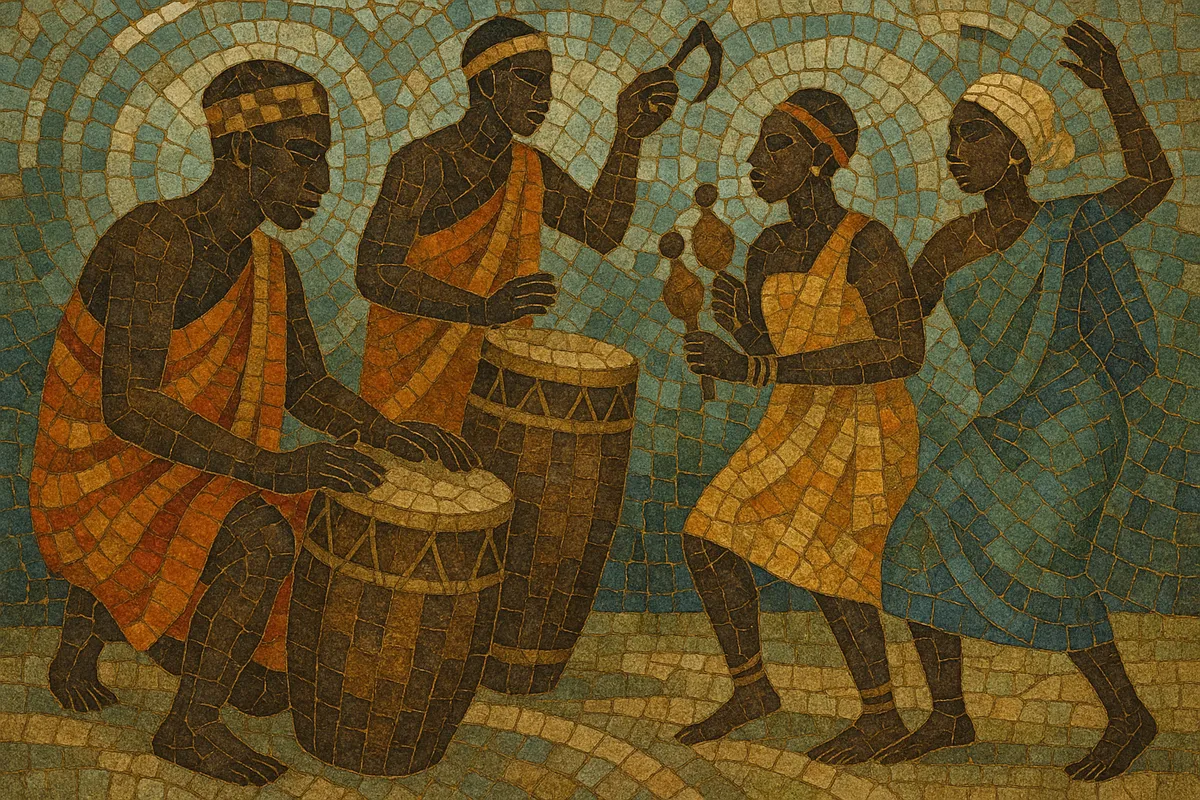Kete is a royal court dance-and-music tradition of the Akan—especially the Asante—of Ghana. It is performed for chiefs and queen mothers at durbars, processions, and funerals, where its stately tempo, intricate drum language, and dignified dance gestures signal prestige and protocol.
The ensemble typically features a family of hand-played drums, an iron bell (dawuro) articulating the time-line, and gourd rattles (torowa) reinforcing the groove. Call-and-response singing in Twi often includes praise poetry and appellations for leaders and ancestors. Rhythms are commonly in a 12/8 feel with layered cross-rhythms and a lead drummer who cues dancers, speeches, and song entries.
While deeply ceremonial, Kete is also a living tradition taught in schools and national ensembles, and its rhythmic aesthetics have informed Ghanaian popular idioms such as highlife.
Kete took shape in the royal courts of the Asante during the rise of the Asante Empire in the 18th century. It served as music for palace protocol, processions, and royal dance, with drumming patterns and songs that communicate praise names, histories, and messages to chiefs and elders.
From early on, Kete combined a master-drummer’s signaling role with interlocking drum parts, bell time-lines, and call-and-response songs. The dance emphasizes measured, graceful movements—often with dancers holding cloth—reflecting respect and hierarchy in the court setting.
Throughout the colonial era, Kete remained tied to chiefly authority and funerary observances. In the decades surrounding Ghana’s independence (1957), Kete was documented and staged by scholars and national troupes (e.g., the Ghana Dance Ensemble), helping standardize pedagogy while retaining local palace custodianship.
Today, Kete is maintained by palace ensembles across the Ashanti Region and taught in cultural centers, universities, and national companies. Its rhythmic language and performance aesthetics have influenced Ghanaian popular music—most clearly highlife—by providing characteristic bell patterns, polyrhythms, and call-and-response textures.


